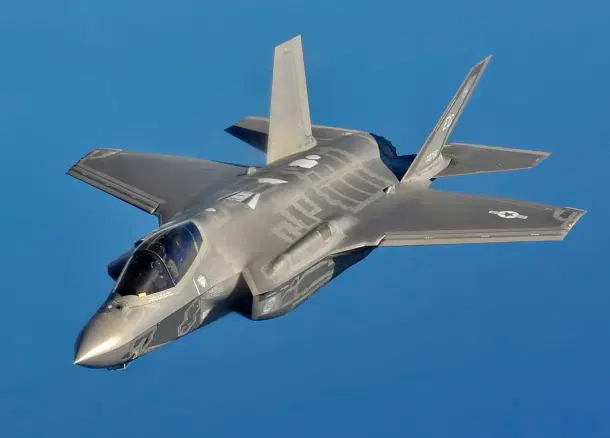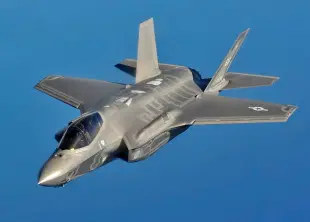Defence
India Informs US It Will Not Purchase F-35 Fighter Jets
Swarajya Staff
Aug 01, 2025, 07:30 AM | Updated 08:18 AM IST
Save & read from anywhere!
Bookmark stories for easy access on any device or the Swarajya app.


India has notified the United States that it will not acquire Lockheed Martin’s F-35 stealth fighter jets, according to a Bloomberg report.
The decision was communicated following a US offer made by President Donald Trump during a February 2025 meeting with Prime Minister Narendra Modi in New Delhi.
The F-35, a fifth-generation multirole fighter, was proposed as part of a broader US plan to increase military sales to India.
The offer aimed to strengthen defense ties and reduce India’s reliance on Russian equipment, including the S-400 air defense system.
India’s operation of the S-400 had raised concerns in Washington, as similar actions led to Turkey’s removal from the F-35 programme.
India’s decision stems from several factors.
The F-35, priced at approximately $80 million per unit, carries high maintenance costs.
The Indian Air Force (IAF), operating 31 squadrons against a sanctioned strength of 42, is focused on modernising its fleet to counter regional threats, particularly from China.
However, the F-35’s advanced systems are incompatible with India’s Russian-origin equipment, such as Il-78 refueling aircraft and the Integrated Air Command & Control System (IACCS).
Additionally, the US is unlikely to meet India’s requirements for co-production or technology transfer, which are central to the “Make in India” initiative.
India’s Multi-Role Fighter Aircraft (MRFA) programme, seeking 114 jets, prioritises local manufacturing.
In contrast, Russia has offered to co-produce its Su-57 stealth fighter in India, aligning with these goals.
The US has not publicly commented on India’s decision.
The F-35 rejection is set against escalating US-India trade tensions, fueled by President Trump’s repeated criticisms of India’s trade policies.
Since April 2025, Trump has targeted India’s $45.8 billion trade surplus with the US and its high tariffs, announcing a 26 per cent tariff on Indian goods, later paused for negotiations.
On 2 July 2025, he claimed India was ready to lower barriers, stating, “India doesn’t accept anybody in… I think India is going to do that,” suggesting a deal could avoid the 26 per cent rate.
On 9 July, he said the US was “close to making a deal with India,” alongside deals with China and the UK.
However, by 29 July, Trump declared the trade deal was not finalised, hinting at 20-25 per cent tariffs, saying, “India trade deal not been finalized…,” when asked about the tariff range.
On 30 July, via Truth Social, he announced imposition of a 25 per cent tariff effective 1 August, plus an unspecified penalty for India’s Russian oil and weapons purchases, criticising India’s tariffs as “far too high, among the highest in the world.”
Despite calling India a “friend,” he accused it of limited business with the US due to trade barriers.
Indian Commerce Minister Piyush Goyal responded, affirming India’s commitment to a “fair, balanced” deal, while studying the tariffs’ impact.





